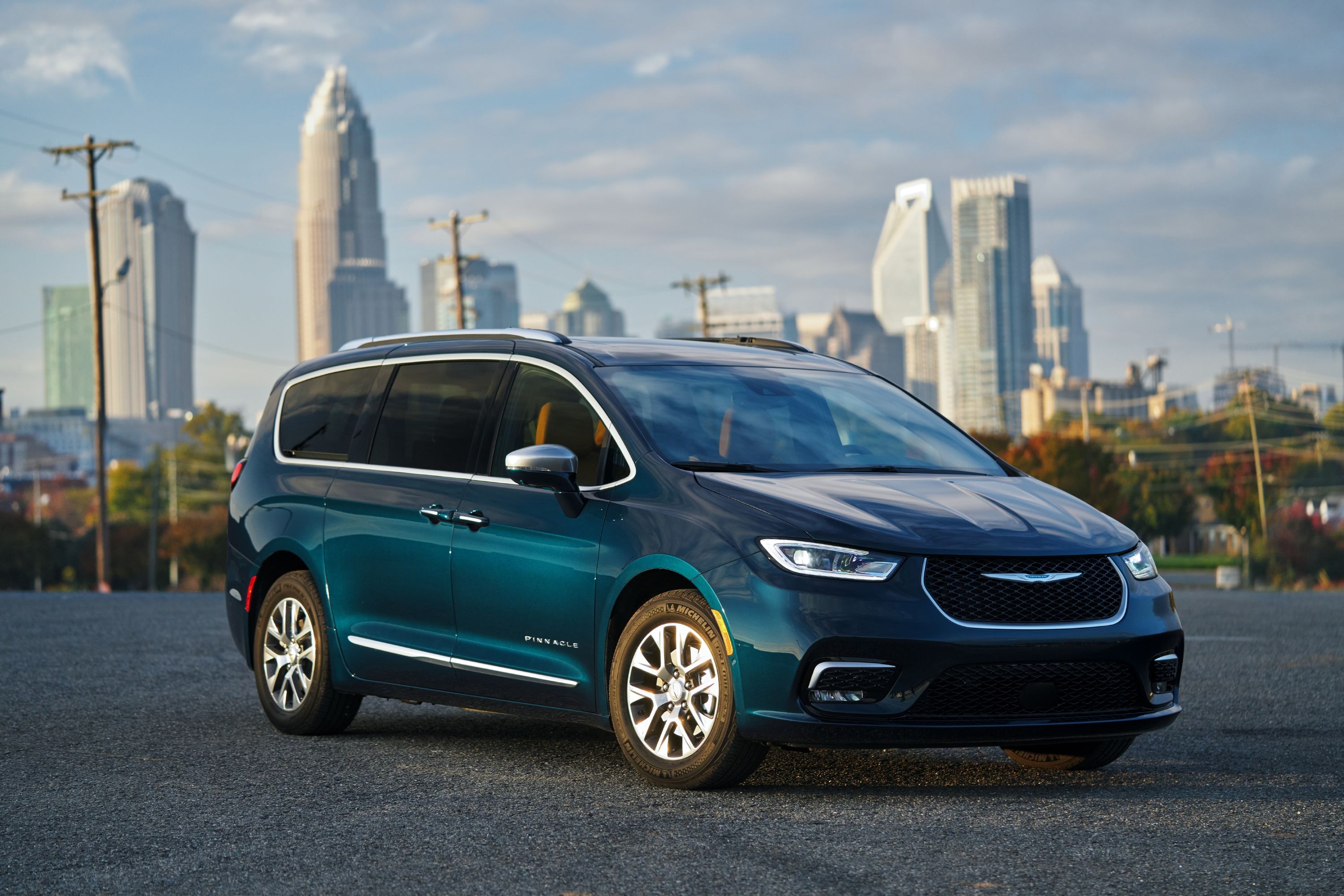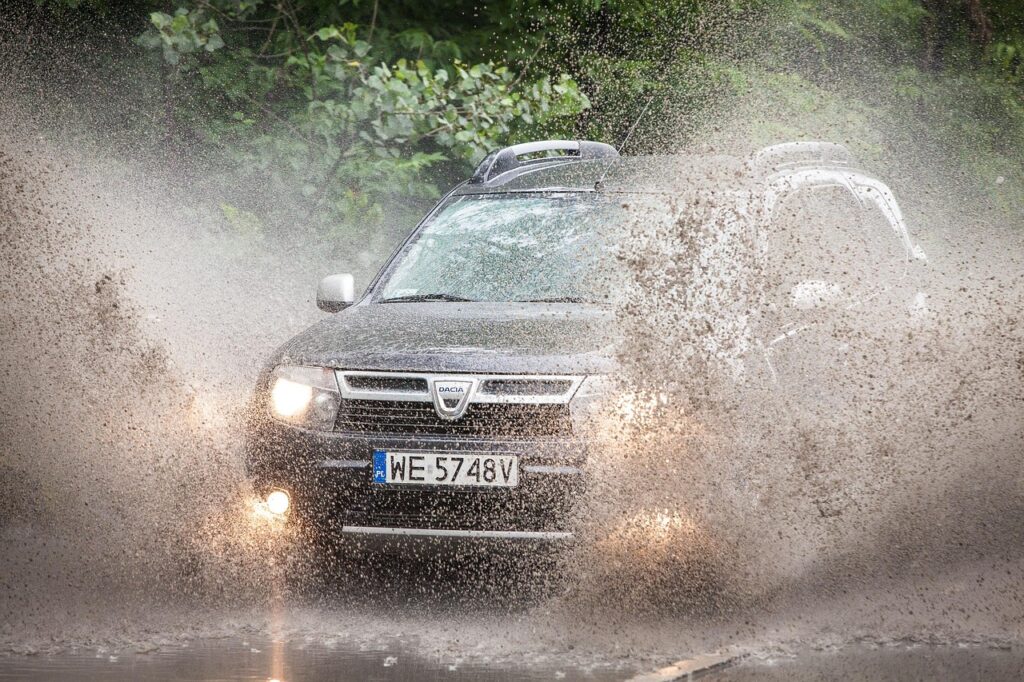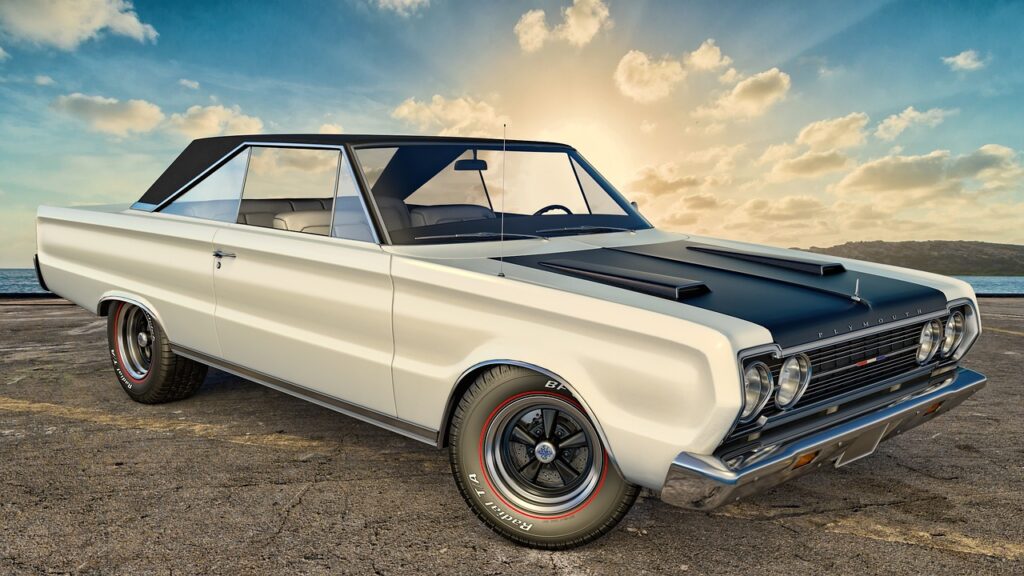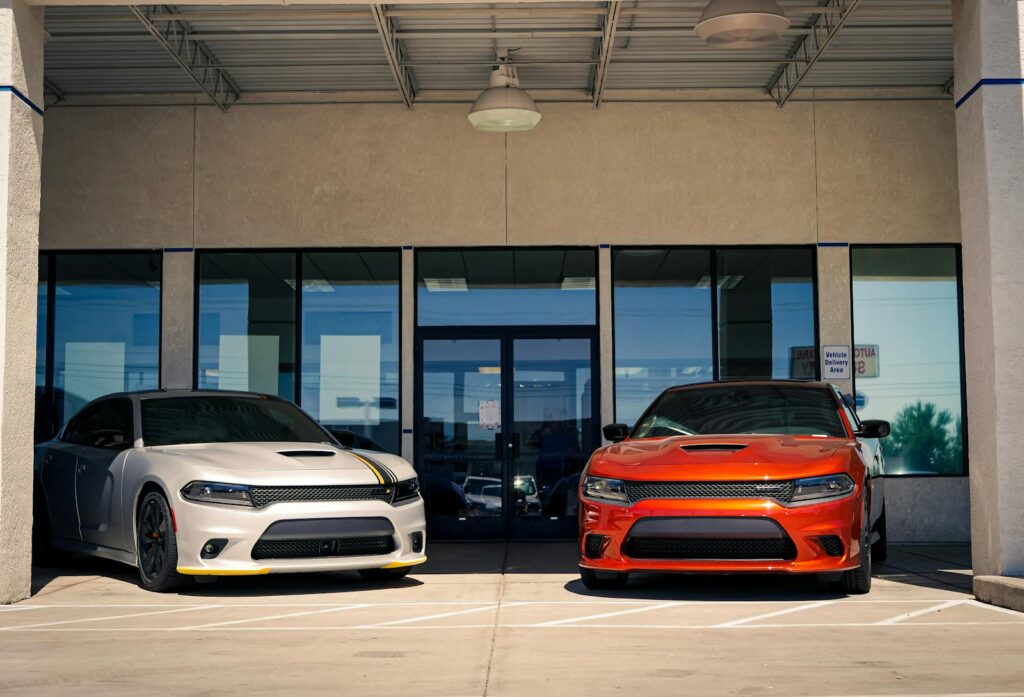
Minivans, those quintessential family haulers, often find themselves the subject of extensive debate among automotive enthusiasts and practical consumers alike. While modern iterations have made impressive strides in safety, efficiency, and comfort, their reputation is, shall we say, a “complicated” one. Much like the cargo pants of the automotive world, minivans are undeniably practical, yet some models, particularly older ones, have earned their dreaded reputation for all the wrong reasons. They present a stark contrast to models that have gone above and beyond to dispel any misgivings.
This article, guided by objective evaluations and a consumer-focused approach, aims to dissect the enduring reasons why certain minivans fall short of expectations. We’ll delve into specific models that have historically struggled, identifying critical weaknesses that make them less than ideal choices for discerning buyers. Our primary goal is to empower you, the consumer, with factual information, helping you navigate the used vehicle market and make well-informed purchasing decisions, steering clear of potential mechanical headaches and safety compromises.
In this first part of our comprehensive analysis, we focus on 11 specific minivan models that frequently land on lists of vehicles to approach with extreme caution. From persistent transmission woes to concerning safety test results and frustrating electrical glitches, these minivans illustrate the significant pitfalls that can turn a seemingly practical purchase into a costly and unreliable burden. We’ll explore their documented shortcomings, offering a clear and unbiased picture of why they often get passed over by savvy consumers.

1. **2005 Chrysler Town & Country**The 2005 Chrysler Town & Country is a minivan that many owners describe as having a “complicated relationship with mechanics.” While its spacious ride was often enjoyed for family utility, the underlying mechanical and electrical systems proved to be a frequent source of frustration. This model often experienced a range of issues that significantly impacted its reliability and long-term owner satisfaction.
One of the most commonly reported and critical failures was with the transmission. Owners frequently encountered scenarios where the transmission failed, leading to costly repairs and leaving them stranded. Beyond the powertrain, the power doors, a signature convenience feature for minivans, were also prone to malfunctioning, adding another layer of mechanical annoyance and impacting daily usability.
Furthermore, the electrical system of the 2005 Town & Country often “went haywire,” contributing to its reputation for unreliability. From minor glitches to more significant system failures, these electrical problems could affect various components, leading to unpredictable operation and further driving up maintenance costs. Considering these widespread and significant flaws, it becomes clear why this specific model is best to look elsewhere today, despite any initial appeal its spaciousness might have offered.
Car Model Information: 2023 INFINITI QX60 Luxe
Name: Chrysler Town & Country
Manufacturer: Chrysler Corporation
Production: 1989–2016
ModelYears: 1990–2016
Class: Minivan
Predecessor: Chrysler Town & Country (1941–1988)
Successor: Chrysler Pacifica (minivan)
Categories: 1980s cars, 1990s cars, 2000s cars, 2010s cars, All-wheel-drive vehicles
Summary: The Chrysler Town & Country is a minivan manufactured and marketed by Chrysler starting from the 1990 until the 2016 model year. It was the third Chrysler minivan model introduced in North America. The Town & Country adopted its nameplate from the flagship Chrysler station wagon line, adopting its exterior woodgrain trim as a design feature for several generations.
Marketed as the flagship of the Chrysler minivan line, five generations of the Town & Country were slotted above the extended-wheelbase Dodge Grand Caravan and Plymouth Grand Voyager. For 2017, Chrysler retired the nameplate, with sixth-generation Chrysler-division minivans becoming the Chrysler Pacifica. After the 2016 model year, Chrysler marked the sale of its 12 millionth minivan (under all three nameplates). Produced almost continuously for 75 years (except during World War II and 1989), the Town & Country nameplate is the longest-produced Chrysler; its longevity is second only to the Chevrolet Suburban in automotive history.
Chrysler assembled the first three generations of the model line in its Saint Louis Assembly facility (Fenton, Missouri). The fourth and fifth-generation Town & Country were produced by Chrysler Canada by Windsor Assembly (Windsor, Ontario).
Get more information about: Chrysler Town & Country (minivan)
Buying a high-performing used car >>>
Brand: Chrysler Model: Town & Country
Price: $33,990 Mileage: 23,460 mi.
Read more about: Inside Vanilla Ice’s Garage: A Deep Dive into the Rapper’s Eclectic and Multi-Million Dollar Automotive Collection
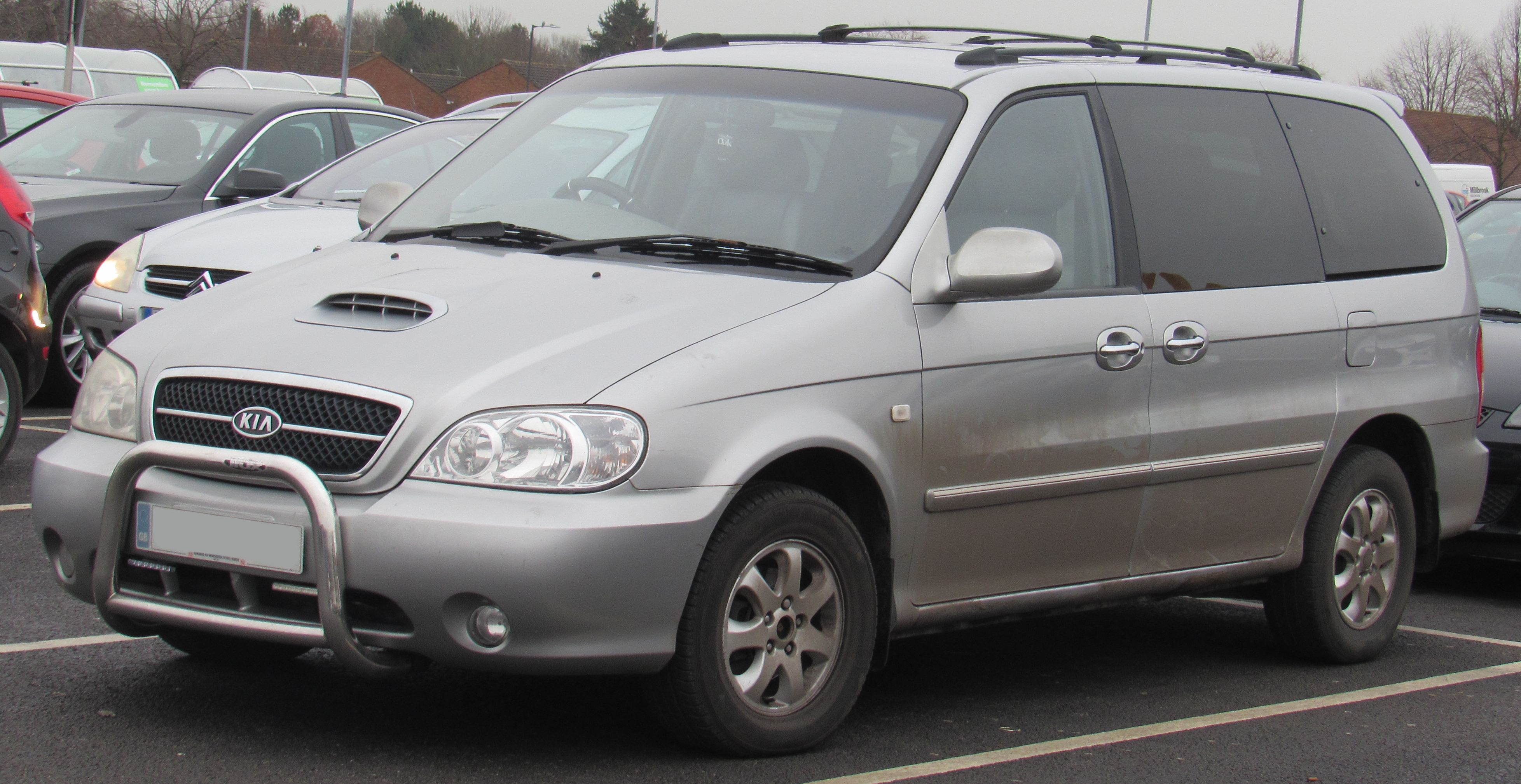
2. **2006 Kia Sedona**The 2006 Kia Sedona represents a challenging period for the manufacturer in the minivan segment. This particular model year struggled considerably, accumulating a record marked by significant mechanical and safety deficiencies. It often landed in the bottom tier of reliability surveys “due to repeated system failures and high repair costs,” a direct consequence of persistent issues.
Among its most notable problems were persistent “engine cooling issues,” which can lead to overheating and potential engine damage if not addressed promptly and expensively. Complementing these engine troubles was a “weak front suspension,” contributing to poor ride quality and accelerated wear on related components. These mechanical flaws presented significant maintenance burdens and compromised the vehicle’s overall driving experience.
Perhaps even more concerning were its safety credentials. The 2006 Kia Sedona registered “below-average safety test results,” indicating a compromise in occupant protection during collisions. While Kia has made substantial advancements in vehicle quality and safety since this era, this specific Sedona model stands as a clear example of a minivan where fundamental reliability and safety performance were simply not up to par, making it a questionable choice for any family.
Car Model Information: 2020 Kia Sedona LX
Name: Kia Carnival
Caption: Kia Carnival (KA4)
Manufacturer: Kia
Aka: Kia Sedona (1999–2021)
Production: January 1998–present
ModelYears: 2002–present (North America)
Class: Minivan
BodyStyle: minivan
Layout: Front-engine, front-wheel-drive layout
Categories: 2000s cars, 2010s cars, All Wikipedia articles written in British English, All articles with dead external links, All articles with unsourced statements
Summary: The Kia Carnival (Korean: 기아 카니발) is a minivan manufactured by the Korean automaker Kia since 1998. It is marketed globally under various nameplates, prominently as the Kia Sedona.
The first-generation Carnival was introduced in January 1998, and was marketed in a single, short wheelbase version. Second-generation models were marketed (2006–2014) in short and long wheelbase variants. A rebadged variant of the second generation was offered in North America as the Hyundai Entourage (2007–2009). Beginning in 2010, the second-generation model received updated equipment, including Kia’s corporate Tiger Nose grille, as introduced by its then new design chief, Peter Schreyer. Kia introduced its third-generation minivan in 2014, solely in a long wheelbase format. The fourth generation was introduced in 2020, when Kia also began using the Carnival nameplate worldwide.
Get more information about: Kia Carnival
Buying a high-performing used car >>>
Brand: Kia Model: Sedona
Price: $10,499 Mileage: 107,987 mi.
Read more about: Navigating the Minivan Maze: The 11 Most Resilient and Least Dependable Models for Families

3. **2004 Chevrolet Venture**The 2004 Chevrolet Venture presented a conundrum for consumers, offering ample interior room while simultaneously struggling with dependability. It attempted to be a “fun” van in terms of space, yet this came at the expense of crucial attributes like safety and durability. For families prioritizing the well-being of their passengers and the longevity of their investment, the Venture often proved to be a disappointing choice.
A significant area of concern for the 2004 Venture was its safety performance, which “wasn’t its strong suit.” This indicated that in the event of a collision, the vehicle might not provide the level of protection expected for a family vehicle. Beyond immediate safety, its overall durability was also a major weakness, often failing to meet the long-term demands placed upon a family hauler.
Rust, in particular, was a “recurring issue” for the Venture, eroding the vehicle’s body and potentially compromising its structural components over time. Even seemingly basic tasks, such as replacing door handles, reportedly “became small sagas,” highlighting poor design and manufacturing quality. These widespread problems underscore why the 2004 Chevrolet Venture, despite its interior room, ultimately failed to deliver on essential promises of reliability and safety.
Car Model Information: 2003 Chevrolet Venture LS
Name: Chevrolet Venture
Aka: Oldsmobile Silhouette,Pontiac Trans Sport
Caption: 2001–2005 Chevrolet Venture LWB
Manufacturer: General Motors
Production: July 1996 – June 24, 2005
ModelYears: 1997–2005
Assembly: Doraville Assembly,Doraville, Georgia
Class: Minivan
BodyStyle: 3-door minivan,4-door minivan
Platform: GM U platform
Designer: Wayne Cherry (1993)
Related: Chevrolet Uplander,Buick GL8,Buick GL8,Buick Terraza,Oldsmobile Silhouette,Opel Sintra
Layout: Front-engine, front-wheel-drive layout
Engine: General Motors 60° V6 engine#LA1,V6
Transmission: GM 4T60-E transmission#4T65-E,automatic transmission
Wheelbase: 112.0 in
Abbr: on (LWB)
Length: 186.9 in
Width: 72.0 in
Height: 67.4 in
Predecessor: Chevrolet Lumina APV
Successor: Chevrolet Uplander
Categories: 2000s cars, All-wheel-drive vehicles, All articles needing additional references, Articles needing additional references from October 2009, Articles with short description
Summary: The Chevrolet Venture is a minivan produced by General Motors for the 1997 to 2005 model years. The Chevrolet Venture, along with most of its General Motors minivan siblings, was built at GM’s Doraville, Georgia, assembly plant.
Get more information about: Chevrolet Venture
Buying a high-performing used car >>>
Brand: Chevrolet Model: Venture
Price: Not Priced Mileage: 226,543 mi.
Read more about: Dream Drives: 15 Classic Cars That Should Absolutely Be Revived for Today’s Roads
4. **2002 Pontiac Montana**The 2002 Pontiac Montana, while checking the boxes for style and seating capacity, critically “fell short where it mattered most—safety and durability.” This model year presented a vehicle that might have looked the part of a capable family minivan, but under closer scrutiny, it revealed significant flaws that raised serious questions about its suitability for daily family use.
Its “crash-test results were below par,” indicating that in real-world accident scenarios, the Montana might not provide occupants with sufficient protection. This is a primary concern for any vehicle, but especially for one designed to transport families. The implications of poor crash performance far outweigh any aesthetic or seating advantages the vehicle might have offered to potential buyers.
Durability issues further plagued the 2002 Montana, specifically “repeated issues with the cooling system” that often led to “costly repairs” and unexpected downtime for owners. Moreover, “over time, rust became a common complaint, especially in colder regions,” compromising the vehicle’s structural integrity and aesthetic appeal. These combined factors solidify the 2002 Pontiac Montana’s position as a minivan with significant drawbacks.
Car Model Information: 2005 Pontiac Montana M16 w/1SE Pkg.
Name: Pontiac Montana
Aka: Pontiac Trans Sport Montana (1997–1998, US; 1997–1999, Canada),Pontiac Montana SV6 (2005–2009; second generation)
Manufacturer: Pontiac (automobile)
Production: 1997–2009
Assembly: Doraville, Georgia
Class: Minivan
Platform: GM U platform
Layout: Front-engine, front-wheel-drive layout
Predecessor: Pontiac Trans Sport
Categories: 2000s cars, All-wheel-drive vehicles, All articles with unsourced statements, Articles with short description, Articles with unsourced statements from December 2009
Summary: The Pontiac Montana (also known as Pontiac Montana SV6 for its second generation) is a minivan that was sold by Pontiac from the 1997 to 2009 model years. The successor to the Pontiac Trans Sport, the nameplate was introduced in 1997 as a trim package for its predecessor. For 1999, Pontiac introduced the Montana as a distinct model line (2000 in Canada). Initially marketed between the Chevrolet Venture and the Oldsmobile Silhouette, the model line was later slotted between the Chevrolet Uplander, Saturn Relay, and Buick Terraza.
Styled as the most “rugged” of the GM minivans, the Montana was styled with two-tone lower body cladding evoking the design of SUVs, with the second-generation Montana SV6 (introduced for 2005) adopting more aggressive exterior styling and optional all-wheel drive. The SV6 was discontinued in the United States after 2006 (following slow sales), with Pontiac continuing to sell the model line in Canada and Mexico through 2009 (a year before the closure of Pontiac). Since the introduction of the original “Dustbuster” generation, Pontiac Trans Sports and Montanas were the most popular minivans among consumers in Canada.
General Motors assembled the Pontiac Montana alongside its divisional counterparts at its Doraville Assembly (Doraville, Georgia) facility, which closed on September 26, 2008. The Montana was not replaced within Pontiac in either the United States or Canada. As the GMT200 platform was replaced by the fullsize GM Lambda CUVs, the GMC Acadia served as the closest successor.
Get more information about: Pontiac Montana
Buying a high-performing used car >>>
Brand: Pontiac Model: Montana
Price: Not Priced Mileage: 86,822 mi.
Read more about: The Unflinching Truth: 14 Automobiles That Dared to Be ‘Rad’ But Landed in the ‘Regrettable’ Bin

5. **2008 Dodge Grand Caravan**The 2008 Dodge Grand Caravan, a model known for its ample interior room, struggled significantly with fundamental reliability issues that severely diminished its appeal. While plenty of room is a desirable trait in a family vehicle, it proved to be almost the sole redeeming quality for this particular generation, as mechanical frustrations often overshadowed any practical benefits.
Among the most frequent and aggravating complaints were problems with the air conditioning units. Owners reported “A/C units that gave up in the heat of summer,” rendering the vehicle uncomfortable and impractical during warmer months. This is a critical failure for a family vehicle, especially one often used for road trips or daily commutes in varying climates, significantly impacting user satisfaction.
Even more seriously, the 2008 Grand Caravan was notorious for “transmissions that couldn’t hold it together.” Transmission failures are among the most expensive and debilitating mechanical issues a vehicle can face, often leading to a complete breakdown and requiring extensive, costly repairs. These persistent powertrain issues, coupled with the A/C problems, made the 2008 Dodge Grand Caravan “functional at times, but frustrating way too often.”
Car Model Information: 2023 INFINITI QX60 Luxe
Caption: 2011 Dodge Grand Caravan Mainstreet
Name: Dodge Grand Caravan
Manufacturer: Chrysler Corporation,Daimler AG,Chrysler LLC,Chrysler Group LLC,FCA US LLC
Class: Minivan
Layout: FF layout,F4 layout
Production: November 2, 1983 –August 21, 2020
ModelYears: 1984–2020
Related: Plymouth Voyager,Chrysler Town & Country (minivan),Dodge Mini Ram,Chrysler Voyager,Volkswagen Routan
Assembly: Windsor, Ontario,Fenton, Missouri,Fenton, Missouri,Fuzhou
Successor: Dodge Journey,Chrysler Voyager
Categories: All-wheel-drive vehicles, All articles with unsourced statements, Articles with short description, Articles with unsourced statements from December 2017, Articles with unsourced statements from May 2009
Summary: The Dodge Caravan is a series of minivans manufactured by Chrysler from the 1984 through 2020 model years. The Dodge version of the Chrysler minivans, was marketed as both a passenger van and a cargo van (the only version of the model line offered in the latter configuration). For 1987, the model line was joined by the long-wheelbase Dodge Grand Caravan. Produced in five generations across 36 model years, the Dodge Caravan is the second longest-lived Dodge nameplate (exceeded only by the Dodge Charger). Initially marketed as the Dodge counterpart of the Plymouth Voyager, the Caravan was later slotted between the Voyager and the Chrysler Town & Country. Following the demise of Plymouth, the model line became the lowest-price Chrysler minivan, ultimately slotted below the Chrysler Pacifica.
Sold primarily in the United States and Canada, the Dodge Caravan was also marketed in Europe and other international markets under the Chrysler brand (as the Chrysler Voyager or Chrysler Caravan). From 2008 onward, Dodge marketed the model line only as the Grand Caravan; Ram Trucks sold a cargo-only version of the model line as the Ram C/V Tradesman. The model line was also rebranded as the Volkswagen Routan from 2009 through 2014.
After the 2020 model year, the Dodge Grand Caravan was discontinued, ending production on August 21, 2020. For 2021 production, the Grand Caravan nameplate was moved to Chrysler, which used it for a Canadian-market version of the Chrysler Pacifica (in the United States, the exact vehicle was marketed as the Chrysler Voyager).
For its entire production run, the Dodge Caravan/Grand Caravan was manufactured by Chrysler Canada (now Stellantis Canada) at its Windsor Assembly facility (Windsor, Ontario). From 1987 until 2007, the model line was also manufactured by Chrysler at its Saint Louis Assembly facility (Fenton, Missouri). Since their introduction in late 1983, over 14.6 million Chrysler minivans have been sold worldwide (including export versions and versions sold through rebranding).
Get more information about: Dodge Caravan
Buying a high-performing used car >>>
Brand: Dodge Model: Grand Caravan
Price: $33,990 Mileage: 23,460 mi.
Read more about: Buyer’s Remorse on Full Display: 15 Vehicles Motorists Swear They’d ‘Unchoose’ if They Could, According to Driver Confessions
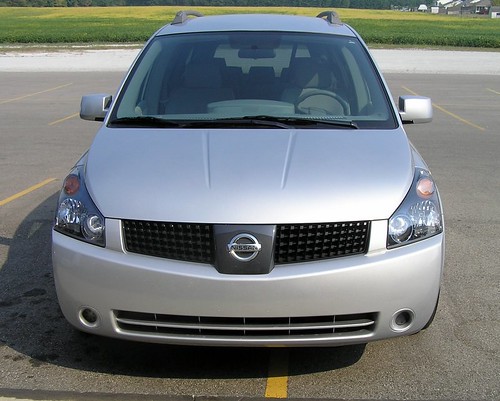
6. **2005 Nissan Quest**The 2005 Nissan Quest tried to be bold in its design approach but ultimately left many drivers “scratching their heads” due to a combination of mechanical woes and peculiar interior decisions. While innovation is often lauded, in this case, it manifested in ways that detracted from the vehicle’s core purpose as a reliable and user-friendly family hauler, raising questions about its overall course.
“Brake complaints” were a common refrain among owners, suggesting an inadequate or problematic braking system that could compromise safety and driving confidence. Coupled with a “squeaky suspension,” the overall driving experience was often far from refined or reassuring. These issues indicated underlying quality control challenges that manifested in tangible, irritating ways during everyday use.
Furthermore, the 2005 Quest was criticized for “odd interior decisions” that likely prioritized unconventional design over practical ergonomics and usability. This lack of user-centric design, combined with its general “lack of reliability,” significantly impacted its appeal and subsequently caused its “resale [to] drop.” Consumers were left to wonder whether this model was truly “ahead of its time—or just off course,” ultimately concluding it was the latter.
Car Model Information: 2013 Nissan Quest LE
Name: Nissan Quest
Caption: 2015 Nissan Quest SV (RE52)
Manufacturer: Ford Motor Company
Production: 1992–2016
ModelYears: 1993–2002,2004–2009,2011–2017
Class: Minivan
Layout: Front-engine, front-wheel-drive layout
Predecessor: Nissan Largo,Nissan Serena
Successor: Nissan Elgrand
Categories: 2000s cars, 2010s cars, All articles with dead external links, Articles with dead external links from February 2018, Articles with dead external links from September 2015
Summary: The Nissan Quest is a minivan manufactured and marketed by Nissan for model years 1993–2017 over four generations.
The first two generations (internally designated V40 and V41) of the Quest were short-wheelbase models co-developed and manufactured with Ford, aside its badge engineered Mercury Villager. For model year 2004 and the third generation (V42), Nissan ended its joint venture with Ford, manufacturing the Quest on its own. For model year 2011, the fourth generation (RE52) became a widened variant of the Nissan Elgrand minivan and became manufactured in Japan. For the preceding generations, the Quest loosely shared its chassis and powertrain with the Nissan Maxima.
Following the decline of minivan sales in North America, Nissan ended sales of the Quest after the 2017 model year.
Get more information about: Nissan Quest
Buying a high-performing used car >>>
Brand: Nissan Model: Quest
Price: $16,499 Mileage: 68,300 mi.
Read more about: Buyer’s Remorse on Full Display: 15 Vehicles Motorists Swear They’d ‘Unchoose’ if They Could, According to Driver Confessions
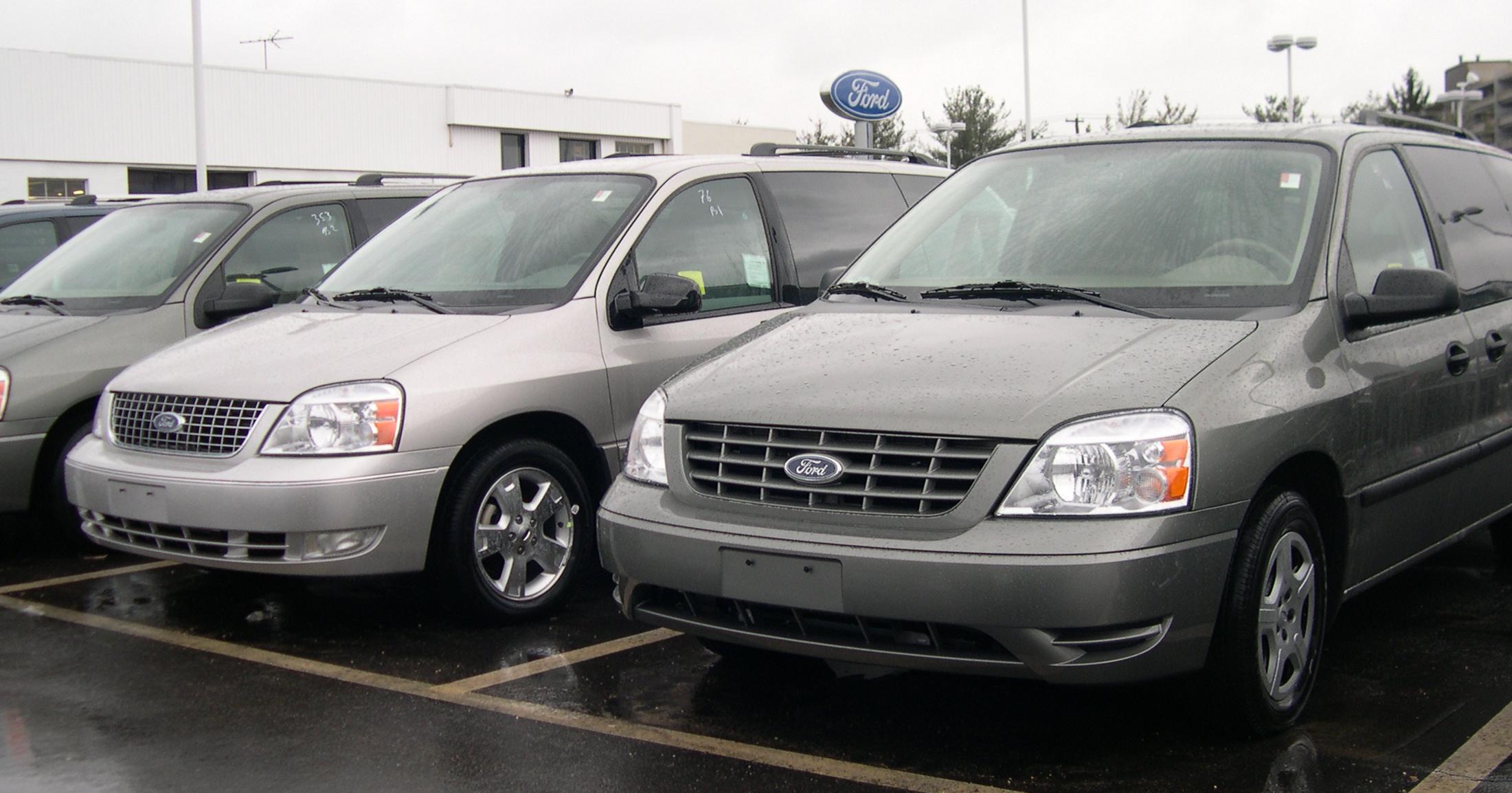
7. **2006 Ford Freestar**The 2006 Ford Freestar represented one of Ford’s final attempts at the traditional minivan market, and for many families, it served as a first introduction to multi-passenger vehicles. While it undoubtedly carried many memories of family life, packed with soccer gear and fast-food wrappers, its long-term performance and reliability proved to be its undoing, leaving a tarnished legacy.
Time has indeed “n’t been kind” to the Freestar, as it frequently suffered from debilitating mechanical issues that undermined its functional purpose. Among the most prevalent complaints were “transmission troubles,” which are notoriously expensive and complex to repair. These powertrain failures often rendered the vehicle immobile and inflicted significant financial burdens on owners.
In addition to transmission woes, “rust issues tarnished many memories,” indicating a susceptibility to corrosion that compromised the vehicle’s structural integrity and aesthetic appeal over time. This vulnerability to rust, especially in regions exposed to harsh weather or road salt, meant that the Freestar often couldn’t “quite keep up” with the demands of long-term ownership, cementing its reputation as a minivan to approach with caution in the used market.
Car Model Information: 2004 Ford Freestar SES
Name: Ford Windstar
Caption: Ford Windstar Limited, second generation example
Manufacturer: Ford Motor Company
Aka: #Mercury Monterey
ModelYears: 1995–2003 (Windstar),2004–2007 (Freestar/Monterey)
Class: Minivan
Layout: Front-engine, front-wheel drive layout
Predecessor: Ford Aerostar,Mercury Villager
Successor: Ford Windstar#Freestar,Ford Galaxy
Categories: 2000s cars, All articles needing additional references, All articles with bare URLs for citations, All articles with unsourced statements, Articles needing additional references from August 2019
Summary: The Ford Windstar (later the Ford Freestar and Mercury Monterey) is a minivan that was produced and sold by Ford from the 1995 to 2007 model years. The second minivan line designed by Ford, the Windstar moved closer in line to the design of the Chrysler minivans. The successor of the Ford Aerostar, the model line adopted front-wheel drive and a “two-box” body design. Three generations of the model line were produced, with the final generation taking on the Ford Freestar nameplate.
Unrelated to the Nissan-developed Mercury Villager, the Windstar was marketed without a Lincoln-Mercury counterpart. Coinciding with the introduction of the Ford Freestar for 2004, Mercury introduced its first Ford-produced minivan in a revival of the Mercury Monterey nameplate.
Following a decline in sales across the minivan segment in the mid-2000s, the Freestar and Monterey were discontinued after the 2007 model year with no direct replacement. In North America, the model line was functionally matched by the 7-passenger 2008 Ford Taurus X wagon/CUV; in Mexico, the Freestar was replaced by the Ford Transit/Tourneo. In 2014, Ford reentered the segment as the Ford Transit Connect compact MPV gained 7-passenger seating in North America.
During its production, the Ford Windstar/Freestar and the Mercury Monterey were sourced from Oakville Assembly (Oakville, Ontario). In total, 1,984,232 were produced (1,704,786 Windstars, 246,493 Freestars, and 32,953 Montereys).
Get more information about: Ford Windstar
Buying a high-performing used car >>>
Brand: Ford Model: Freestar
Price: $5,492 Mileage: 98,802 mi.
Read more about: The Hidden Cost: 10 Family Minivans That Become Costly Money Pits When Major Maintenance Hits

8. **2003 Mazda MPV**The 2003 Mazda MPV aimed to offer “nimble handling in a compact form,” carving out a niche for itself as a potentially more engaging minivan to drive. However, this perceived agility came with significant compromises in other critical areas, ultimately leading to its quiet fade from the market. Its underpowered engine and crucial system failures became notable drawbacks for family use.
A key limitation was its “underpowered engine,” which “struggled under pressure,” especially when carrying a full load of passengers or cargo. This lack of adequate power could make highway merging or uphill climbs a frustrating and even unsafe experience, undermining the vehicle’s utility as a family hauler designed for diverse driving conditions. An engine that cannot confidently perform its duties is a significant hurdle for any vehicle.
Furthermore, the 2003 MPV was plagued by “HVAC failures,” which “turned hot days unbearable” for families relying on it. A functional heating, ventilation, and air conditioning system is essential for passenger comfort, particularly for children, and its repeated failure created significant inconvenience and discomfort. These issues collectively led to the MPV “faded quietly into the background,” as consumers sought minivans that offered a more robust and dependable experience for their families.
Car Model Information: 2005 Mazda MPV LX
Name: Mazda MPV
Manufacturer: Mazda
Aka: Mazda8 (2006–2016)
Production: 1988–2016
Class: Minivan
Categories: 1980s cars, 1990s cars, 2000s cars, All-wheel-drive vehicles, All articles with dead external links
Summary: The Mazda MPV (Multi-Purpose Passenger Vehicle) is a minivan manufactured by Mazda. Introduced in 1988 as a rear-wheel-drive model with optional selectable four-wheel drive, this was replaced in 1999 with a front-wheel-drive version with optional all-wheel-drive in some markets. Over one million MPV models have been produced since its introduction.
Get more information about: Mazda MPV
Buying a high-performing used car >>>
Brand: Mazda Model: MPV
Price: $6,448 Mileage: 106,151 mi.
Read more about: Your Definitive Guide to the Safest Family Vehicles of 2025: Top Models Earning Highest Safety Ratings

9. **2003 Oldsmobile Silhouette**The 2003 Oldsmobile Silhouette represents a minivan that struggled significantly with delivering on core promises of dependability and occupant protection. Despite its design as a family vehicle, many owners experienced frustrating unreliability, making it challenging to trust when needed most. This persistent lack of reliability substantially diminished its overall utility and consumer appeal.
A primary concern was the vehicle’s “weak crash protection,” indicating substandard occupant safety during collisions. For a family-oriented vehicle, compromised safety features pose an unacceptable risk. This fundamental flaw overshadowed any practical benefits like spaciousness, making it a particularly problematic choice for safety-conscious buyers.
Furthermore, the 2003 Silhouette was plagued by “glitchy electronics,” which contributed to its unreliable reputation. Electrical systems that failed to operate correctly often led to unpredictable issues, ranging from minor annoyances to critical system malfunctions. Such problems disrupted daily operations and frequently necessitated unexpected and costly repairs, impacting owner satisfaction.
Adding to these woes were reports of “constant breakdowns,” transforming what should have been a convenient family vehicle into a source of stress and unexpected expenses. The frequent mechanical failures made it “hard to rely on when it mattered most,” eroding owner confidence. This solidifies its status as a minivan best avoided by consumers seeking dependable, long-term transportation.
Car Model Information: 2002 Oldsmobile Silhouette GLS
Name: Oldsmobile Silhouette
Manufacturer: Oldsmobile
Production: August 1, 1989 – March 31, 2004
ModelYears: 1990–2004
Predecessor: Oldsmobile Custom Cruiser
Successor: Saturn Relay,Buick Terraza
Class: Minivan
Platform: GM U platform
Related: ubl
Categories: 1980s cars, 1990s cars, 2000s cars, All articles needing additional references, All articles that may contain original research
Summary: The Oldsmobile Silhouette is a minivan manufactured by General Motors for model years 1990–2004 over two generations.
Production ended when General Motors discontinued its Oldsmobile brand in 2004. GM continued to market badge-engineered variants of the U-body minivans, the Saturn Relay and the Buick Terraza from model years 2005 to 2007.
Get more information about: Oldsmobile Silhouette
Buying a high-performing used car >>>
Brand: Oldsmobile Model: Silhouette
Price: $999 Mileage: 250,072 mi.
Read more about: Hollywood’s High Octane: Tom Cruise’s 15 Vehicles That Define His Adrenaline Obsession

10. **2012 Volkswagen Routan**The 2012 Volkswagen Routan entered the minivan market with a distinctive look and some comfort features, yet its fundamental identity posed significant challenges. Volkswagen endowed it with a “clean look” and “a few comfort perks,” but underneath, the Routan primarily “shared most of its DNA with the Chrysler Town & Country.” This rebadging meant it inherited not only its platform but also its predecessor’s well-documented reliability concerns.
A critical issue directly transferred from its Chrysler counterpart involved the transmission, noted “especially around the transmission.” Transmission failures are among the most expensive and debilitating mechanical problems a vehicle can encounter. This inherited weakness meant that the Routan was predisposed to significant mechanical unreliability, despite any superficial Volkswagen enhancements.
Its brief “5 years” in production further highlighted its struggle to establish a strong market presence. The Routan ultimately “disappeared from Volkswagen’s lineup” without a direct replacement, a clear indication that its sales and performance were insufficient to justify continued investment. This makes it a fleeting attempt in the minivan segment.
Ultimately, the 2012 Routan’s fate was largely sealed by its failure to offer substantial improvements over its donor vehicle’s known shortcomings. Consumers found that while the badge was different, the potential for reliability issues persisted. Consequently, it provided little unique value beyond its brand name, becoming another minivan frequently overlooked by informed buyers.
Car Model Information: 2012 Volkswagen Routan SE
Name: Volkswagen Routan
Caption: 2009 Volkswagen Routan SE
Manufacturer: Chrysler LLC
Production: 2008–2013
ModelYears: 2009–2014
Assembly: Windsor, Ontario
Class: Minivan
BodyStyle: minivan
Layout: Front-engine, front-wheel-drive layout
Platform: Chrysler minivans (RT)
Related: Chrysler Town & Country,Dodge Caravan,Chrysler Voyager,Lancia Voyager
Engine: Chrysler Pentastar engine,V6 engine
Transmission: Ultradrive#62TE
Wheelbase: 121.2 in
Abbr: on
Length: 202.5 in
Width: 76.9 in
Height: 68.9 in
Predecessor: Volkswagen Transporter (T4)
Successor: ubl
Categories: 2010s cars, Articles with short description, Cars discontinued in 2014, Cars introduced in 2009, Commons category link from Wikidata
Summary: The Volkswagen Routan is a seven-seat minivan and rebadged variant of the Chrysler RT platform, with revised styling, content features, and suspension tuning from the fifth-generation Dodge Grand Caravan and Chrysler Town & Country.
Manufactured alongside the Chrysler and Dodge minivans at Windsor Assembly and marketed in the United States, Canada, and Mexico, the Routan debuted at the 2008 Chicago Auto Show and went on sale in the United States in September of the same year as a 2009 model. The Routan’s minivan variants include the Dodge Caravan, Ram C/V, Chrysler Town & Country, and Lancia Voyager (export)—that by 2009 have ranked as the 13th best-selling automotive nameplate worldwide, with over 12 million sold.
Production of the Routan was halted in 2012 due to high inventory levels, and Volkswagen announced the 2013 model year would be primarily reserved for rental car companies and other fleets, with limited availability to the public at dealer showrooms. This also held for the 2014 model year Routan.
Get more information about: Volkswagen Routan
Buying a high-performing used car >>>
Brand: Volkswagen Model: Routan
Price: $10,995 Mileage: 94,500 mi.
Read more about: Buyer’s Remorse on Full Display: 15 Vehicles Motorists Swear They’d ‘Unchoose’ if They Could, According to Driver Confessions

11. **The Chrysler Voyager (Specific Problematic Years)**The Chrysler Voyager, a minivan with a long history, includes specific model years that proved exceptionally troublesome for consumers. While designed to be an affordable, versatile family hauler, certain vintages—specifically the 1994, 1999, 2000, 2001, and 2002 models—were consistently afflicted by a broad spectrum of serious failures. These issues profoundly compromised both reliability and safety, making these years particularly risky for prospective buyers.
Among the most critical and frequently reported issues across these problematic years was a “slipping transmission.” Transmission failure is a severe mechanical fault, often resulting in a complete loss of vehicle propulsion. Such repairs are typically extensive and costly, sometimes exceeding the vehicle’s market value. This recurring problem made daily driving unpredictable and contributed significantly to owner dissatisfaction.
Beyond the powertrain, climate control systems were a consistent source of frustration. Owners frequently reported widespread “AC/heater issues,” leading to uncomfortable interior conditions during extreme weather. Similarly, a “blower motor that refuses to function” was a common complaint, rendering temperature regulation and defrosting ineffective, impacting both passenger comfort and driving safety.
Furthermore, these specific Voyager models often harbored fundamental safety concerns, including “seat belt and airbag troubles.” Malfunctioning or inadequate restraint systems pose a direct risk to occupants in a collision. Combined with reported “fuel system faults,” which present potential fire hazards, these critical safety deficiencies firmly place these particular Chrysler Voyager years on the list of vehicles to avoid for family transport.
Car Model Information: 2020 Chrysler Voyager LX
Name: Chrysler Voyager
Manufacturer: Chrysler (automotive brand)
Aka: Lancia Voyager (2011–2016),Chrysler Grand Caravan (2020–present)
Class: Minivan
Production: 1988–2016,2019–present
BodyStyle: minivan
Predecessor: Plymouth Voyager,Lancia Phedra,Dodge Grand Caravan
Related: Dodge Caravan,Chrysler Town & Country (minivan),Chrysler Pacifica (minivan),Volkswagen Routan
Categories: 2000s cars, 2010s cars, All-wheel-drive vehicles, All articles needing additional references, All articles with unsourced statements
Summary: The Chrysler Voyager (and the long-wheelbase Chrysler Grand Voyager) is a minivan produced by the Chrysler division of Stellantis. In the current lineup, it is positioned as the lower-end Chrysler minivan, having replaced the Dodge Grand Caravan in 2020, below the Chrysler Pacifica.
The Chrysler Voyager was introduced in Europe in 1988, and was a rebadged version of the Dodge Caravan in the United States. It originally evolved with the Caravan, the Plymouth Voyager, and the Chrysler Town & Country. In the United States, the Chrysler Voyager nameplate replaced the short-wheelbase (SWB) version of the Plymouth Voyager following the folding of the Plymouth division by DaimlerChrysler AG in 2001, and was discontinued in 2003. The nameplate was revived for the 2021 model year following the discontinuation of the Dodge Grand Caravan after the 2020 model year, and is rebadged as the Chrysler Grand Caravan in Canada.
In Continental Europe, the Chrysler Voyager was rebadged as the Lancia Voyager from the 2011 until 2016 model years. The Voyager was sold with different engines, including diesel engines, and was also available with manual transmission and a foot-operated emergency brake. Although now produced solely in Ontario, Canada, the Grand Voyagers were still available with diesel engines as standard. These diesel engines are based on a modern double overhead cam common rail design from VM Motori of Italy. The last European Chrysler Grand Voyagers are very similar to the 2008 and later Chrysler Town & Country vans, and were sold only in the long-wheelbase version (as in North America). Following the fifth generation, the Grand Voyager nameplate was discontinued in all markets.
Together with its nameplate variants, the Chrysler minivans have ranked as the 13th bestselling automotive nameplate worldwide, with over 12 million sold.
Get more information about: Chrysler Voyager
Buying a high-performing used car >>>
Brand: Chrysler Model: Voyager
Price: $14,490 Mileage: 113,990 mi.
Read more about: Minivan Money Pits: 8 Models to Approach with Caution Due to Costly Transmission Troubles
Navigating the used minivan market demands a discerning eye, especially when considering older models that might offer an appealing low initial price point. Our analysis of both individual problematic models and systemic shortcomings clearly illustrates that the allure of practicality can quickly yield to a host of mechanical frustrations, significant reliability issues, and, most critically, compromised safety. From persistent transmission failures and glitchy electronics in specific vehicles like the 2003 Oldsmobile Silhouette and the rebadged 2012 Volkswagen Routan, to the inherent design flaws common across many vintage minivans—such as heightened rollover risks, a stark absence of modern safety features like airbags and electronic stability control, and dangerously subpar braking performance—the picture becomes unequivocally clear. These family haulers, while perhaps holding nostalgic value, often fall far short of the performance and protection standards expected by today’s consumers. Empowering yourself with this objective, data-driven information is not merely about avoiding costly repairs; it is fundamentally about safeguarding your family on the road. Therefore, a thorough, critical evaluation of any older minivan’s documented history and inherent design limitations is essential for making a truly informed and responsible purchasing decision.

